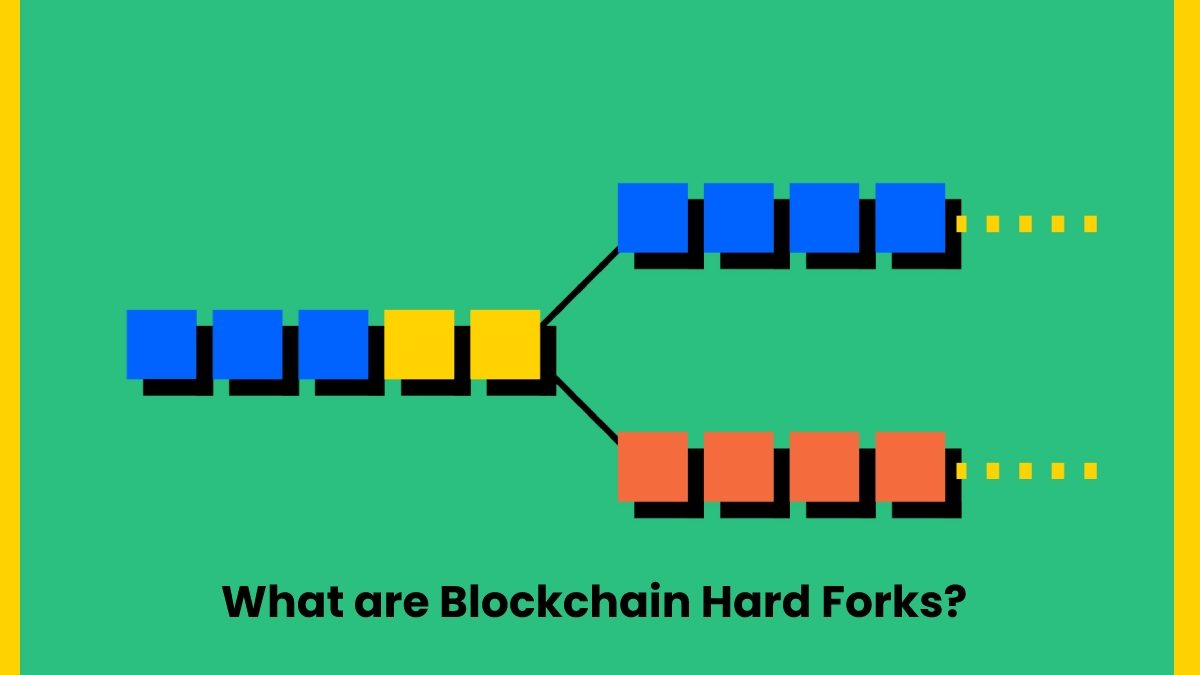Blockchain hard forks are independent upgrades in parallel to the original blockchain network.
In other words, a blockchain project with a technological base needs to be updated and implement improvements and patches, like almost any software.
In the case that concerns us, blockchain hard forks are updating processes in which the original blockchain gives rise to another similar project. These types of projects are incompatible since they work with different rules.
This stems from frequent disagreements in the community when trying to implement updates due to wanting to include improvements, change rules, or fix inconsistencies and bugs in the code.
Characteristics of Blockchain Hard Forks
To begin with, before any change is made to a blockchain network, it should be discussed in the community itself. Developers and miners will have to argue if the new update responds to a need or not.
If the community does not agree, if the party that does want to carry out the update does so, then we are facing a blockchain hard fork. From that precise moment, there will be two projects, one the original and the other the updated. In this type of division.
Both networks are usually totally incompatible. Otherwise, one could speak of a blockchain soft fork, which would lead to an understanding between both networks, being compatible.
But what does it mean that they are compatible or not? The answer is simple: they can operate with each other if they are consistent. If not, no. In the latter case, one well-known ‘ exchange ‘ could be used, such as Binance or PancakeSwap.
Then, in short, what characterizes a blockchain challenging fork process is the null interconnection between projects. Creating two or more communities and the different functionalities the affected projects possess among themselves are produced.
Cases of the complex and soft fork in the business world
To better understand the concept, two examples will be detailed below:
- First of all, we would have the eBay company. This company’s prominent professional is the sale of products via the Internet. However, Paypal was promoted for the business to have a differentiating component, a payment alternative for customers who did not wish to provide their payment details directly. It went so well, and Paypal grew so much that the split with eBay became a reality. This is an example of a hard fork case in which both projects are different and offer different services and solutions.
- Secondly, we will focus on the companies Santander and Openbank. Santander is a bank that operates internationally, one of its hallmarks being face-to-face action in branches, thus allowing a certain closeness with the customer. On the other hand, Openbank arose from the need to update the bank with a more digitized operation, responding to the needs of the younger population. Later, this split was given thanks to the fact that in the business group, an agreement was not reached on whether Santander should declare a more digital policy or not, so it was decided to attend to that need by creating a bank within the group that would function entirely on its own. that way
As can be seen, in the case of eBay and Paypal. It is clear that both projects are different and respond to needs that are not mutual. Meanwhile, on the Santander and Openbank side, it can be seen that both businesses are practically the same thing, except in certain aspects. Which in this case would be the dichotomy between face-to-face attendance and the digitization of financial entities.
Blockchain Hard fork Examples
To show examples of this type of division in the blockchain ecosystem. We only need to look at the two most relevant projects: Bitcoin and Ethereum. Both projects have lived in the first person, the two most famous splits.
In the case of Ethereum (ETH), an agreement was reached by the majority of the community to make a drastic change after an attack on the network. However a small part of the ETH community did not agree and decided to continue with the virgin project. Without changes in the blockchain system. Therefore, the original project is still called ETH, and the residual project that follows the old rules was called Ethereum Classic (ETC).
In another order is Bitcoin (BTC). In this scenario, an internal debate was held between developers and miners given. The multiple disadvantages that BTC was beginning to have compared to other blockchain projects. That sought to solve the same need. The case ended with a large part of the community defending the originality of BTC and rejecting the proposed updates. As a result, Bitcoin Cash (BCH) emerged. With BCH. The advantages are that the times for carrying out the operations and the commissions per transaction decreased drastically. As intended with BTC itself.

